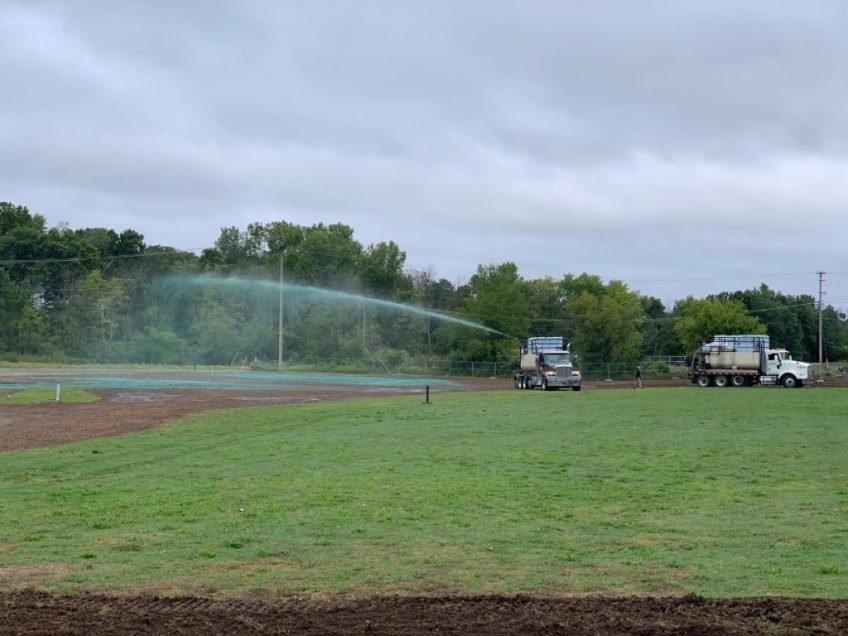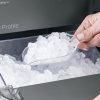Hydroseeding is a planting process that uses a mixture of seeds, mulch, fertilizers, and binding agents, which are collected into a tank, and then sprayed onto the ground to promote rapid germination and prevent soil erosion. This is a commonly used method in areas demanding vegetation growth or erosion control. The process is efficient and effective, capable of covering large areas in a short amount of time. Continuous advancements in hydroseeding technology have this process, making it increasingly efficient and sustainable. As the world grapples with the challenges of climate change, methods such as hydroseeding cannot be overstated.
Hydroseeding Through History
Hydroseeding dates back to the early 20th century when it was first introduced in the United States. The prime mover behind this innovation was Maurice Mandell, who built the first hydroseeder in 1953 – a wooden slurry unit. This technology, albeit basic, marked the birth of hydroseeding techniques. Significant developments would follow over the ensuing decades, leading to a wide variety of hydroseeding applications today.
As time progressed and the demand for large-scale reseeding projects increased especially after forest fires and disasters, helicopters were incorporated into this process in the 1960s. This method allowed for seeding vast, inaccessible terrains that machinery could not reach. In the 1980s, groundbreaking innovations were made in the form of jet and mechanical agitation systems which ensured a homogenous mix and superior coverage. These advancements marked significant milestones in the development of hydroseeding technology.
Current Innovations
Today, the hydroseeding industry enjoys a range of technological advancements that enhance productivity and efficiency. Among them is the emergence of advanced hydroseeding machines, which are equipped with features such as robust agitation systems, easy to handle spray nozzles, and even GPS systems for accurate delivery. These machines not only complete tasks with increased speed, they also significantly cut down on labor and material costs, contributing to improved efficiency in the seeding process.
It’s not only the machines that have seen an upgrade – the hydroseeding mixes themselves have been improved as well. For instance, the integration of bio-stimulants and micro-nutrients has become quite common. These additions provide the necessary boost to the soil and plants, improving their health and vitality. Software technology has also found its place in the industry, aiding in project management and ensuring seamless operations. Perhaps one of the most exciting and innovative advancements is the introduction of drones in hydroseeding. These drones, equipped with advanced technologies, are capable of reaching inaccessible areas, and are more precise compared to traditional methods. DroneSeed, a Seattle-based startup, employs specially designed drones to conduct reforestation projects, targeting areas ravaged by wildfires. The use of drone technology allowed for the successful planting of seeds in hazardous terrains, often inaccessible or unsafe for human operators.
The Future of Hydroseeding Technology
One of the most talked-about future innovations in the hydroseeding industry is the potential integration of artificial intelligence (AI). AI algorithms can be programmed to analyze and learn from previous hydroseeding projects. This data can then optimize future operations, making them more efficient and cost-effective. Additionally, AI may assist in monitoring the health of the seeded areas, alerting human operators to potential issues before they become problematic.
As we continue to understand more about soil compositions and regional climates, custom hydroseeding blends can also be created to perfectly suit a specific project’s needs. This approach could boost both plant survival rates and post-seeding plant health. Drones, which are already utilized for hydroseeding, are also expected to play an even bigger role in the future. As technology advances, it is anticipated that drones will become larger, more efficient, and able to cover larger areas in less time. By adopting these tech-integrated approaches, companies emphasize how viable and effective these hydroseeding innovations are. This technology, coupled with enhanced precision software, continuous updates and attention paid to sustainability, means that hydroseeding will remain as relevant in the future as it is today.
The advancements in hydroseeding technology highlights the importance of continuous innovation and adaptation in this integral field. It is clear that each innovation, whether it be the introduction of bio-stimulants and micro-nutrients, software integration for project management, or the deployment of drones, signifies a significant leap forward in the effectiveness and efficiency of hydroseeding. The potential future achievements, such as the incorporation of AI and the development of custom blends tailored to specific soil and climate conditions, hold a promising future for the industry. These innovations will undoubtedly have far-reaching impacts on habitats and environmental management, offering improved methods for erosion control, ecological restoration, and afforestation efforts. Not only will this aid industry and civilization, but the overall ecology and ecosystem of the world, resulting in better sustainability practices.







